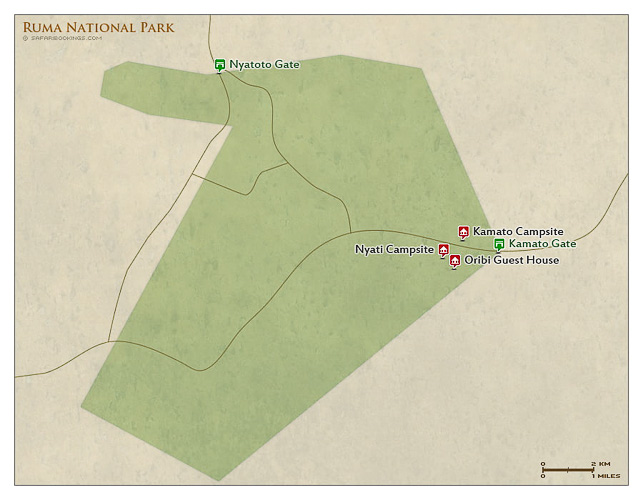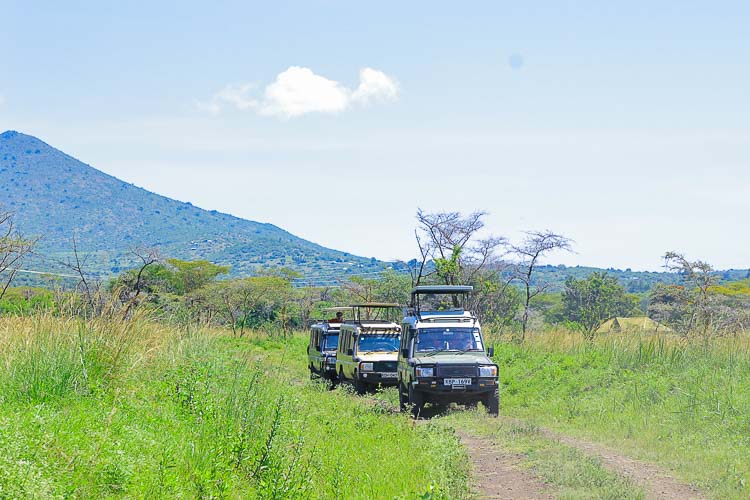
Ruma National Park location
Ruma National Park, located in Kenya’s Lambwe Valley,Homabay County Kenya is a hidden treasure for safari enthusiasts. Spanning 120 square kilometers, it’s the only sanctuary for the critically endangered roan antelope in Kenya, with fewer than 30 individuals left. The park also boasts over 400 bird species, including the rare Blue Swallow, making it a paradise for bird lovers. Its tranquil atmosphere, rolling savannahs, and unique volcanic landscapes offer an off-the-beaten-path adventure.
Key highlights include:
- Wildlife: Roan antelopes, Rothschild giraffes, Waterbucks, Zebras.
- Birdwatching: Over 400 species, including migratory Blue Swallows.
- Activities: Game drives, Cycling, Hiking, guided nature walks, and birdwatching.
- Cultural Connection: Explore Luo traditions and the legend of Gor Mahia.
- Conservation Efforts: Community programs and advanced anti-poaching measures.
Accessible by road or air, Ruma offers peaceful safaris, with accommodations ranging from budget guesthouses to luxury lodges. Whether you’re a wildlife enthusiast, photographer, or cultural explorer, Ruma National Park delivers an authentic and serene experience.
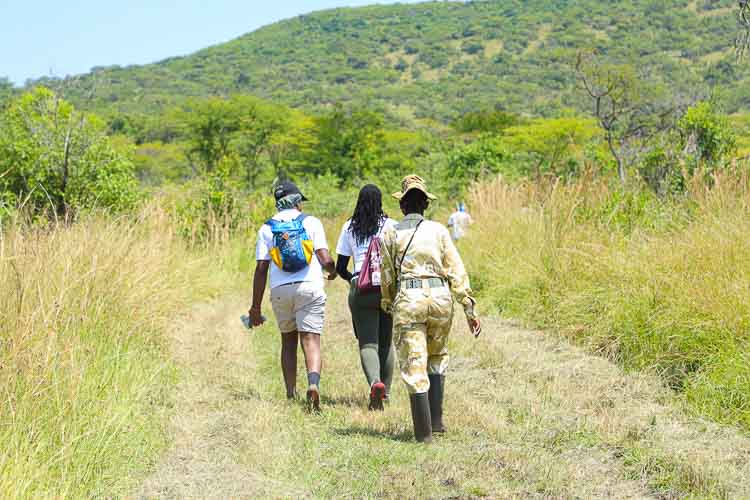
Location and Landscape
Geographic Overview
Ruma National Park, covering 120 square kilometers, is nestled in Kenya’s Lambwe Valley within Homa Bay County, about 30 kilometers from Homa Bay town and near the shores of Lake Victoria [5][8]. The park is located 425 kilometers from Nairobi and 165 kilometers from Kisumu, making it a remote yet accessible destination for nature enthusiasts.
The park’s natural boundaries create a dramatic and picturesque setting. To the southeast, the towering Kanyamwa Escarpment forms a striking backdrop, while the volcanic plugs of the Ruri Hills dominate the northern horizon. These features encircle a protected valley that serves as a sanctuary for wildlife, offering both shelter and reliable water sources.
Originally established as the Lambwe Valley Game Reserve in 1966, the area was later designated as Ruma National Park, reflecting its growing importance in conservation [10]. The main entrance is located 42 kilometers from Homa Bay, and the journey to the park often takes visitors through rural roads that showcase the daily life of Luo communities and their traditional farming practices [5]. Navigating the park’s roads, especially during the rainy season, requires a sturdy 4×4 vehicle, as conditions can become challenging [8][11].
This unique geography and setting create a foundation for Ruma’s diverse and dynamic landscapes.
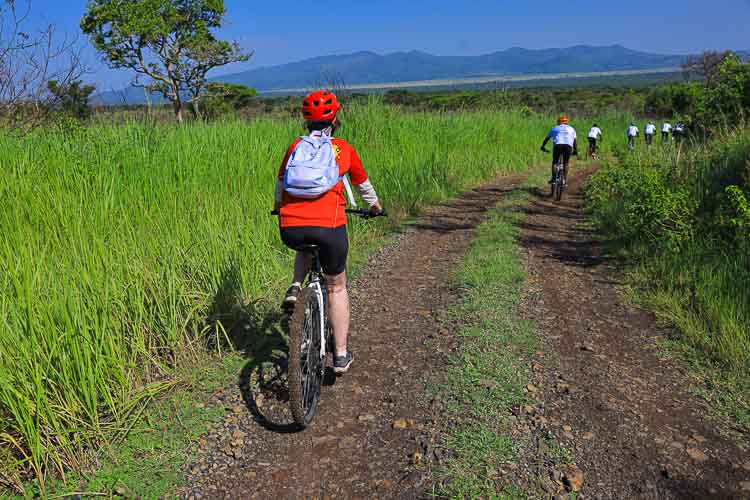
Terrain Features
Ruma National Park’s terrain tells the story of ancient volcanic activity and seasonal water flows, shaping an ecosystem that’s both varied and vibrant. Situated on the flat floor of the Lambwe River Valley, the park offers a range of habitats that support a rich array of wildlife [5].
The landscape is a mix of rolling savannahs, acacia-dotted woodlands, volcanic formations, and riverine corridors [13]. The open grasslands, scattered with acacia trees, provide essential grazing and shade for animals, while the Lambwe River sustains life during the dry season, creating natural pathways along its banks [11].
One of the park’s standout features is its “black cotton” clay soil, derived from volcanic rock. This soil type supports lush vegetation, particularly during the rainy season, and plays a key role in sustaining the park’s ecosystem [5][14]. The volcanic origins of the region are also evident in its striking rock formations and nutrient-rich soils that promote robust plant growth.
The park’s open woodland thickets offer shelter for a variety of species, further enhancing its ecological diversity [5]. With over 400 bird species recorded, Ruma is a haven for birdwatchers [8][13]. The park’s appearance transforms dramatically with the seasons: during the rains, the valley floor bursts into vibrant greenery, while the dry season draws wildlife to the remaining water sources. This seasonal rhythm highlights the park’s unique blend of savannah and forest environments, making it a compelling destination for nature lovers.
Wildlife and Conservation Efforts
Wildlife Highlights
Ruma is Kenya’s last stronghold for the endangered roan antelope, cementing its place as one of East Africa’s key conservation areas [7]. Back in 2019, the roan antelope population had dwindled to just 19 individuals, and current estimates still hover below 30 [4]. Across Kenya, their numbers have dropped by over 80% in recent decades, making Ruma their final safe haven [15].
But Ruma isn’t just about the roan antelope. The park is also home to other remarkable species like Rothschild’s giraffes and both black and white rhinos [16]. Predators such as leopards and spotted hyenas thrive here too, helping maintain a balanced ecosystem despite the park’s relatively small size.
“Ruma National Park is important not only for its roan antelopes but also as a habitat for several other endangered species, including the Rothschild giraffe and both black and white rhinos.” – Bakari Chongwa, KWS Senior Assistant Director of the Western Conservation Region [16]
Ruma also attracts bird enthusiasts from around the world. With its diverse bird population, the park has earned the distinction of being an Important Bird Area [7]. This incredible biodiversity serves as the backbone for the park’s conservation efforts.
Conservation Programs
Ruma’s conservation initiatives are laser-focused on protecting its endangered species and maintaining ecological balance. The Kenya Wildlife Service (KWS) leads the charge, collaborating with local communities and partners to tackle pressing challenges [4]. A standout effort is the Roan Antelope Conservation Program, which combines anti-poaching patrols, community education, and genetic research [4]. Scientists warn that populations below 50 individuals face severe genetic risks, underscoring the urgency of these efforts [17].
Anti-poaching measures have become more advanced in recent years. Traditional ranger patrols now work hand-in-hand with cutting-edge technology, including camera traps, drones, and tracking collars, to monitor wildlife and catch illegal activity [4].
“Accurate data from this area is essential for the Kenya Wildlife Service’s mandate, as effective conservation efforts depend on a thorough understanding of wildlife populations and their interactions with human activities.” – Vasco Nyanga, Research Scientist at Ruma National Park [16]
Efforts to restore habitats are also in full swing. These include reforestation, controlled bush clearing, and water conservation projects aimed at reversing environmental degradation [4]. Local communities are deeply involved through eco-tourism collaborations, beekeeping, sustainable farming programs, and compensation schemes for livestock losses caused by wildlife [4]. The Ruma Site Support Group (SSG), a grassroots organization, plays a vital role in these initiatives [3].
The Tsetse Fly Control Program is another important project, using traps, insecticide-treated cattle, and biological research to manage tsetse fly populations [4].
Corporate partnerships have also stepped up to support conservation. In 2022, the Safaricom Foundation pledged KES 17 million to fund fencing for Ruma National Park, following a similar commitment in 2021 for fence repairs [8][15]. Tourism revenue further fuels conservation, with entrance fees and accommodation charges directly contributing to these efforts [4].
While challenges like habitat destruction, human-wildlife conflict, and the genetic bottleneck of the roan antelope persist, the dedication of conservation programs, community involvement, and visitor contributions offer a beacon of hope for safeguarding Ruma’s extraordinary wildlife.
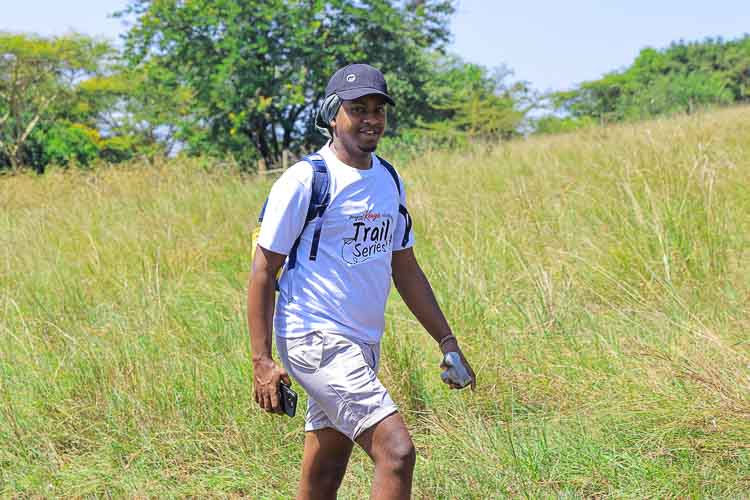
Activities and Experiences in Ruma National Park
Safari Experiences in Ruma National Park
Ruma National Park offers a tranquil and uncrowded wilderness experience, perfect for early morning or late afternoon game drives [10][20]. As Solomon Juma noted in a Tripadvisor review from December 2022, “meeting other tourists in the park is next to impossible” [20]. This solitude makes it an ideal escape for nature lovers.
Exploring the rugged terrain in a 4×4 vehicle – preferably with a trusted tour operator like Wild Springs Adventures gives you the chance to encounter Kenya’s only population of roan antelopes. Along the way, you might also spot Rothschild giraffes, zebras, buffalos, and even the elusive black rhinos [1][10].
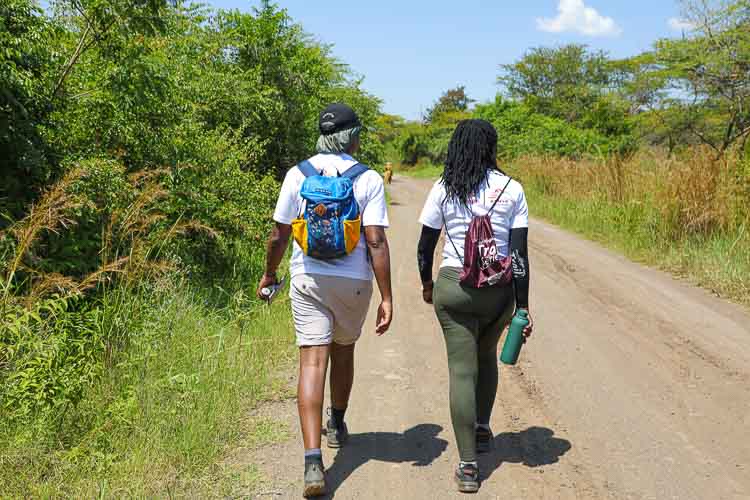
Guided Walking safaris
Beyond game drives, the park offers guided nature walks and birdwatching, each showcasing a different side of Ruma’s rich biodiversity [1][10][19]. Walking safaris, led by skilled rangers, provide a closer look at the flora, birds, and smaller animals that often go unnoticed from a vehicle. Plus, these walks reward visitors with stunning views of the surrounding landscapes, including the picturesque Gwassi Hills [10][18].
Birdwatching and Birdwatching Photography
Birdwatching enthusiasts will feel right at home here. With over 400 bird species recorded, Ruma is a haven for bird lovers [1]. The rainy season is particularly rewarding for spotting rare species like the blue swallow, African fish eagles, and various kingfishers [10][19]. The blue swallow, a scarce intra-African migrant bird in particular, uses Ruma as a critical stopover during its migration from South Africa in April and its return in September [2].
Boat safaris on nearby Lake Victoria
If you’re looking for even more adventure, consider boat safaris on nearby Lake Victoria. These excursions expand the wildlife experience, offering a chance to explore the lake’s ecosystem, observe water birds, or even try fishing [1]. And with all these activities, you’ll naturally find plenty of opportunities to capture striking photographs of Ruma’s beauty.
Cycling Safari with the Wildlife
Ruma National Park is one of few Kenyan parks where cycling safaris coexist with wildlife. In fact, cyclists often encounter endangered rothschild Girraffes roaming freely. Unlike Hell’s Gate (known for dramatic landscapes), Ruma lets cyclists encounter rare savannah wildlife at close range.
Hiking Experience in the Roan Antelope Sactuary.
Ruma National Park has a special 15km hiking trail right inside its Roan Antelope Sanctuary.
- It’s the only place in Kenya where you can hike inside a protected home for these rare antelopes.
- Guided hikes help you spot wildlife safely.
Wildlife Photography and Scenic Views
Ruma National Park’s diverse landscapes make it a dream destination for photographers. Covering 120 square kilometers, the park offers everything from sweeping savanna views to intimate wildlife moments [6].
One standout spot is Nyatoto Ridge, which provides breathtaking panoramic views of Lambwe Valley and the Ruri Hills. It’s perfect for sunrise and sunset photography sessions. Offering not only stunning vistas but also increased chances of spotting wildlife in the distance [21].
“Nyatoto Ridge is one of the most breathtaking and must-see attractions in Ruma National Park. With its elevated vantage points, diverse wildlife, and panoramic views, it offers visitors a unique opportunity to experience the untamed beauty of Kenya’s last refuge for the roan antelope.” [21]
Another excellent location is the Kanyamwa Escarpment, where steep slopes and dramatic cliffs create striking backdrops for landscape shots [12]. From its elevated viewpoints, you can capture the expansive beauty of western Kenya, making it a favorite for photographers seeking dramatic compositions.
For the best photography conditions, plan your visit during the dry season (June–October or January–February). Clear skies and easier access to remote viewpoints during this time make it ideal for capturing Ruma’s vibrant landscapes [21]. Don’t forget to pack binoculars along with your camera gear – they’re invaluable for spotting distant wildlife and scouting out perfect shots [21].
If you’re serious about photography, consider overnight camping near the park. Staying close allows you to capture the park’s shifting moods at dawn and dusk, offering unique lighting and atmosphere without the need to rush back to distant accommodations [18].
Local History and Traditions
The Legend of Gor Mahia
Ruma National Park’s name carries a deep connection to Luo traditions and the legendary figure of Gor Mahia. Born in 1797, Gor Mahia was a revered Luo warrior and prophet whose legacy continues to inspire cultural pride and hope. In 1983, when the Lambwe Valley Game Reserve was elevated to national park status, it was renamed “Ruma”. In honor of Gor Mahia – a decision rich in cultural significance for the Luo community [22].
Gor Mahia’s influence extends far beyond the park. In 1968, the Gor Mahia Football Club was established in Nairobi to commemorate his legacy [23]. Over the years, the club has become one of Kenya’s most successful football teams, winning the Kenyan Premier League multiple times [24]. Visitors to the region can also visit the Gor Mahia Shrine, located just 2 kilometers from Ndhiwa shopping center in Kanyamwa Village. This sacred site, marked by a revered tree, continues to draw those who wish to honor his memory [24]. Gor Mahia’s enduring legacy not only shapes the cultural identity of the area but also strengthens the connection between local communities and conservation efforts.
Local Community Connections
Ruma National Park’s identity is shaped by the Luo and Suba communities. In fact, these groups lived alongside local wildlife for generations. Remarkably, this harmony existed long before the park was established. These communities relied on farming, fishing, and grazing, creating a way of life that respected the natural world [22].
Traditional beliefs played a pivotal role in early conservation. Local folklore often regarded certain animals as sacred, symbolizing strength and prosperity, which fostered a natural respect for wildlife [22]. This cultural mindset eased the transition to formal conservation efforts, as local residents already held a deep connection to the land and its creatures.
Today, local communities remain active partners in conservation [22]. They participate in eco-tourism and cultural heritage initiatives that benefit both the park’s mission and their own livelihoods [22]. Visitors can enjoy authentic cultural experiences here. For example, explore traditional Luo homesteads. You can also engage with local Abasuba and Kiisi communities. These groups are known for farming and fishing traditions [14]. Plus, many experiences include traditional music and dance. Performers showcase indigenous instruments. This offers a direct glimpse into the region’s rich heritage [14].
The involvement of local communities in conservation and conflict management has been key to building support for the park. Tourism has also created economic opportunities, reinforcing the link between protecting Ruma’s unique ecosystem and improving community welfare. This shared commitment ensures that conservation remains a priority for everyone involved [25].
Planning Your Visit
Best Time to Visit Ruma National Park
If you’re planning a trip to Ruma National Park, the dry season – running from June to October and January to February – is the ideal time for spotting wildlife. During these months, animals gather around water sources, making it easier and more rewarding to view them in their natural habitat.
For bird enthusiasts, the rainy season, particularly in April and November, is a fantastic time to visit, as bird activity is at its peak. However, September to April is also excellent for observing migratory and nesting species. The park is home to over 400 bird species, including the endangered blue swallow, which migrates from Southern Tanzania in April and leaves in September. Ruma National Park is listed as an Important Bird Area(IBA). Keep in mind, though, that road conditions can be tricky during the heavy rains in April and May, so plan accordingly. A 4×4 Safari jeep is the most recomnded during this time.
Once you’ve settled on the best time for your visit, it’s time to map out your journey to the park.
Directions to Getting to Ruma National Park
Ruma National Park is well-connected to Kenya’s major cities. By road, it’s about 425 km from Nairobi (a 7–8 hour drive).165 km from Kisumu (3–4 hours), and just 30 km from Homa Bay (1 hour) [26].
From Nairobi, the most direct route is via Nakuru, Kericho/Kisumu, Katito, and Kendu Bay, leading to Homa Bay Town [26]. If you’re starting in Kisumu, take the Katito–Kendu Bay–Homa Bay Road [26]. From Homa Bay, it’s a straightforward drive west on the Homa Bay–Mbita Road [26]. If you’re visiting during the wet season, a 4×4 vehicle is a must, as the gravel roads can become challenging. Make sure to refuel in Homa Bay town, as it’s the last stop with petrol stations [26].
For those short on time, flying is a faster option. Flights from Nairobi Wilson Airport to Kisumu International Airport cost between $35 and $230 [27]. Once in Kisumu, a 3-hour drive will get you to the park. Significantly cutting down travel time compared to driving from Nairobi. Alternatively, you can charter a flight to Homa Bay Airstrip or Kabunde Airstrip for even closer access, followed by private transfers [26].
Budget travelers can also use public transport. Bus fares from Nairobi to Homa Bay range from $5 to $16 [27]. From Homa Bay, you can hire a local motorbike (boda boda) or a taxi to reach the park entrance [26]. If you’re driving from Nairobi, expect to spend around $44–$63 for fuel and other expenses [27].
Once you’ve arrived, you’ll find plenty of lodging options to suit your budget and preferences.
Accommodation Options close and around Ruma National Park
Ruma National Park and its surrounding areas offer a variety of accommodations to fit every traveler’s needs. For an immersive experience, camping within the park is an affordable way to connect with the wilderness and enjoy the African outdoors.
Options range from budget guesthouses and campsites to luxurious lodges. Budget accommodations start as low as KSh 249 per night, while high-end stays can go up to £296 per night.
Budget Options – Ruma National Park accommodation
For travelers on a budget, guesthouses like Tausi Hotel and Bimoss Hotel are excellent choices. Mid-range options include Hotel Hippo Buck and Karibuni Eco-Cottages, the latter founded in 2009 by Team Kenya, a UK charity working with rural communities in Ndhiwa.
Midrange and Luxury Accomopdation Options
If you’re after a more luxurious experience, Kisindi Lodge and Spa offers premium amenities. For something truly special, consider exclusive lodges on Lake Victoria’s islands, such as, Victoria Sands Lodge, Rusinga Island Lodge or Mfangano Island Lodge, which provide stunning lake views and top-tier hospitality. Families will find accommodations with spacious rooms and kid-friendly meal options, while eco-lodges catering to sustainable tourism are also available [28].
Ruma National Park: Home to Roan Antelope Kenya’s Rare Antelope Species
Kenya safari antelopes grab the hearts of wildlife Lovers. Ruma is the only place in Kenya where the critically endangered Roan Antelope (Hippotragus equinus) can be found in the wild. These majestic animals, known for their striking appearance, live in small mixed-gender herds. The Lambwe Valley is considered a prime area for spotting them. Explore more antelopes to spot while on a Kenya Safari.

Conclusion: Why Ruma National Park is Worth Visiting
Ruma National Park stands out as a hidden gem, offering a safari experience that combines rare wildlife, breathtaking landscapes, and a sense of tranquility that’s hard to find in busier reserves. It’s one of the few places where you can encounter critically endangered species, like the roan antelope, alongside a dazzling variety of birdlife. The park’s untouched wilderness creates an ideal setting for those seeking a deeper, more personal connection with nature.
The scenery here is nothing short of spectacular, making it a paradise for wildlife photographers and nature enthusiasts alike [30]. But Ruma is more than just a visual feast – it holds cultural importance, too. It’s steeped in the history of the Luo community and the legendary wizard Gor Mahia, adding a layer of storytelling to your visit [9].
Visiting Ruma isn’t just about exploration; it’s an opportunity to make a difference. Your trip contributes directly to conservation efforts and supports local communities through various initiatives [3]. This unique balance of preserving nature and uplifting people makes Ruma a destination with purpose.
“Tourism supports the bottom‑up economic model. A lot of people earn through the sector.” – Joseph Gathua, Ministry of Wildlife [29]
For those looking to step off the beaten path, Ruma National Park offers an exclusive safari experience. Whether you’re on the trail of Kenya’s last roan antelopes, capturing the splendor of rare bird species, or simply soaking in the peace of an uncrowded wilderness, Ruma promises a safari adventure unlike any other.
FAQs
What is the best time of year to visit Ruma National Park for wildlife viewing and birdwatching?
The best time to experience wildlife in Ruma National Park is during the dry seasons, spanning from June to October and January to February. These months make it easier to spot animals as they tend to gather around water sources, and the vegetation is less thick, providing clearer views.
If you’re into birdwatching, plan your trip between April and November. This is when migratory birds join the park’s impressive lineup of over 400 bird species. It’s a rare chance to catch a glimpse of species like the Blue Swallow thriving in their natural environment.
How is Ruma National Park helping to protect the critically endangered roan antelope?
Ruma National Park’s Role in Saving the Roan Antelope
Ruma National Park is a sanctuary for Kenya’s last remaining population of the critically endangered roan antelope. With fewer than 30 individuals left, this park has taken on the immense responsibility of ensuring their survival through targeted conservation efforts.
The park’s strategies include anti-poaching patrols, habitat restoration initiatives, and community outreach programs. These measures work together to protect the species by increasing ranger presence to prevent illegal activities, educating nearby communities on the importance of conservation, and conducting genetic research to aid in population recovery.
By tackling significant challenges like poaching and habitat destruction, Ruma National Park is giving the roan antelope a fighting chance to thrive in its natural habitat and remain a part of Kenya’s wildlife heritage for generations to come.
What cultural experiences can visitors enjoy near Ruma National Park?
Visitors to Ruma National Park have the chance to dive into the rich traditions of the Luo and Suba communities. Imagine walking through local villages, where you can learn about age-old lifestyles, join in lively cultural dances, or marvel at the intricate craftsmanship and storytelling that define these communities. Guided tours often include opportunities to meet and interact with locals, giving you a deeper understanding of their customs, daily routines, and heritage.
What makes these experiences even more rewarding is their impact. By taking part, you’re not just enhancing your safari adventure – you’re also supporting community-driven tourism efforts that help fund conservation projects. It’s a wonderful way to connect with the people and traditions of the area while soaking in the stunning landscapes of Ruma National Park.
Photos of Ruma National Park, Kenya


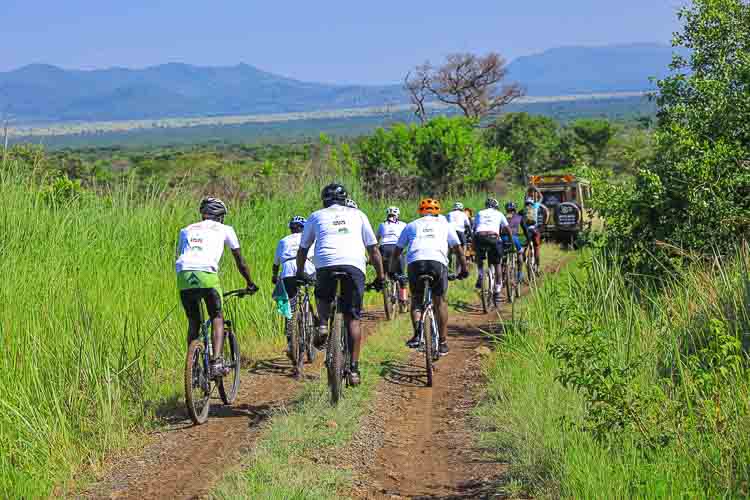
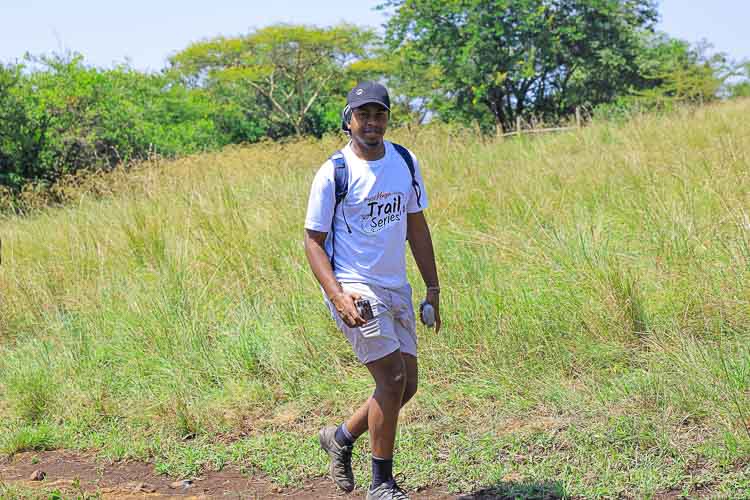
Map of Ruma National Park
